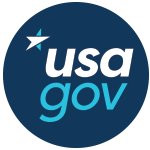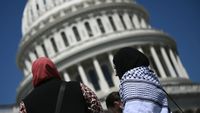Explore web search results related to this domain and discover relevant information.

Along with fewer repayment plans, ... student-loan payments in the event of economic hardship and unemployment, leaving standard forbearance as the only option to delay payments. It also eliminates the graduate PLUS program, which allowed borrowers at graduate and professional schools to borrow ...
Along with fewer repayment plans, the bill eliminates borrowers' ability to defer their student-loan payments in the event of economic hardship and unemployment, leaving standard forbearance as the only option to delay payments. It also eliminates the graduate PLUS program, which allowed borrowers at graduate and professional schools to borrow up to the full cost of attendance for their education.The bill retains the parent PLUS program, which allows parents to take on student loans for their kids' educations, but places a $65,000 lifetime cap. In addition to repayment changes, the bill takes on college accountability: It ensures that programs in which graduates don't earn more than the median high school graduate in their state will lose federal student-loan eligibility.Trump's "Big Beautiful Bill" eliminates existing income-driven repayment plans, bringing a major change for student-loan borrowers.Congress passed President Donald Trump's "Big Beautiful Bill" — a major spending package — on Thursday, meaning a slew of proposals to change the way student-loan borrowers take out and pay off their debt is becoming law.

While critics argue that the spending ... the limits will help control college costs by reducing incentives for schools to raise tuition. Starting next summer, the bill will affect borrowers taking out loans and those stuck on the Biden-era SAVE plan, potentially causing monthly ...
While critics argue that the spending bill would disproportionately block marginalized communities from pursuing advanced degrees, Republicans say the limits will help control college costs by reducing incentives for schools to raise tuition. Starting next summer, the bill will affect borrowers taking out loans and those stuck on the Biden-era SAVE plan, potentially causing monthly payments to increase by hundreds of dollars, according to the Student Borrower Protection Center.In its place, the bill raises annual and lifetime limits on federal Stafford loans, but these new caps may not be enough to cover further education for students. ... Graduate students would be limited to borrowing up to $20,500 annually, with a lifetime cap of $100,000, while professional students, such as those in medical or law school, could borrow up to $50,000 per year, with a $200,000 lifetime maximum.The GOP’s ‘big beautiful bill’ could drastically change the way graduate students fund their advanced degreesThe “big beautiful bill” proposes significant changes to how graduate and professional students finance their education. One of the biggest changes would be the elimination of the federal Grad PLUS loan program beginning in July 2026, which currently allows students to borrow up to the full cost of attendance for graduate programs.

The new Repayment Assistance Plan would require 30 years of payments before student loan forgiveness is allowed, up from 20 years to 25 years in previous options. · The legislation also eliminates the Graduate PLUS Program, which allows students going to graduate or professional school to cover ...
The new Repayment Assistance Plan would require 30 years of payments before student loan forgiveness is allowed, up from 20 years to 25 years in previous options. · The legislation also eliminates the Graduate PLUS Program, which allows students going to graduate or professional school to cover the full cost of attendance.The Senate’s version of President Trump’s “big, beautiful bill” passed Tuesday would make significant changes to student loan programs, worrying advocates that borrowers will face higher monthly payments. The reconciliation bill revamps the types of student loan repayment plans available to borrowers; how much students will be able borrow from the federal government; and…The Senate’s version of President Trump’s “big, beautiful bill” passed Tuesday would make significant changes to student loan programs, worrying advocates that borrowers will face higher mont…Borrowers struggling to repay their loans will no longer be able to defer due to unemployment or economic hardship, but it would also give borrowers the ability to rehabilitate defaulted loans twice instead of the current one time that is allowed.
Work-study - The Federal Work-Study ... Learn more about the work-study program. Loans - When you receive a student loan, you are borrowing money that you must pay back with interest....
Work-study - The Federal Work-Study Program allows you to pay for school by earning money at a part-time job. You will earn at least the current federal minimum wage at a job that may be related to your studies. Learn more about the work-study program. Loans - When you receive a student loan, you are borrowing money that you must pay back with interest.Learn more about the available types of federal student loans and the considerations to take when applying. · You may not need to hire a company to help you find financial aid. Instead, search online for scholarships or ask a school guidance counselor for help.Learn about the most common ways to get help paying for college and trade or career school. Options include grants, loans, scholarships, and work-study.

LA MESA, Calif (KGTV) - A UC San Diego student is now at a crossroads as President Donald Trump's "big, beautiful" bill is putting his law school plans in flux, since there are new limits on federal student loan programs.
He was hoping to go to law school to study constitutional law, but he said right now, things are up in the air. That's because graduate students will only be able to borrow $20,500 per year, with a lifetime borrowing cap of $100,000. For fields like medicine and law, which Soria aspires to pursue, there's a lifetime cap of $200,000 and annual borrowing amounts of $50,000. Before the bill, students were able to borrow the full cost of attendance through the Grad PLUS loan program.Just on Thursday, Congress passed Trump's spending tax bill, which will overhaul the federal student loan system. ... Borrowers now only have two options for repayment, while several others were eliminated. Not only that, but there will also be changes to the Pell Grant program, which offers financial aid to low-income students, potentially forcing them to enroll in more classes to receive assistance. ... "I'm probably going to have to work for longer to save up money for grad school, and that could potentially mean losing or missing out on essential opportunities that could have been crucial to my development," said Soria.A UCSD student is now at a crossroads as President Donald Trump's "big, beautiful" bill is putting his law school plans in flux, since there are new limits on federal student loan programs.The federal student loan system is undergoing an overhaul due to the passage of Trump's spending tax bill, which the president is expected to sign on the Fourth of July.

Complete the Free Application for Federal Student Aid (FAFSA) form, apply for financial aid before the deadline, and renew your FAFSA form each school year.
Welcome to Nelnet.com. As your student loan servicer, we’re here to make the repayment process as simple as possible.
Yes, we’re a student loan servicing company – but we’re much more than that. We’re a service company specializing in consumer finance, telecommunications, and K-12 and higher education. Based in Lincoln, Nebraska, with offices around the globe, we’re 7000+ associates working together to serve our communities and make our customers’ dreams possible.We have two websites where you can directly access your student loans without needing to visit Nelnet.com.Based on which loan types you have (federal loans under accounts beginning with E or commercial loans under accounts beginning with D and J), select the button for your applicable servicer below.Once your servicer’s website (Nelnet.studentaid.gov opens in new browser tab or SloanServicing.com opens in new browser tab) opens, bookmark the web address for easy access to your loans moving forward.

Eighth grade school teacher Shannon Mooney was elated when she learned last year that her student loans were forgiven after 25 years of payment.
“Why would I receive late notices on a loan that was forgiven?” she said. The public school teacher’s federal student aid was consolidated through loan servicer MOHELA several years ago.A Chicago-area teacher was thrilled to find out her student loan had been forgiven after 25 years of payments -- but then she started receiving late notices.A teacher in the Chicago area was thrilled to find out her student loan had been forgiven -- until she started receiving late notices.Turns out, she’s not alone. In the past four years, nearly two dozen people filed complaints about MOHELA with our NBC Responds teams nationwide. One of the top reasons for the complaints were alleged problems with student loan forgiveness being denied.

Nearly half a million graduate students nationwide would each lose access to tens of thousands of dollars in school loans annually if the massive tax-and-spending bill before Congress becomes law.
Students attend Columbia University graduation in New York on May 17, 2023. More than 3,500 graduate students at the school received Grad PLUS loans in the 2023-2024 academic year, averaging more than $47,000 each.President Donald Trump’s signature proposal would eliminate a major form of federal financial aid for would-be lawyers, doctors and other professionals—the grad PLUS federal student loan program—which, since 2006, has allowed students to borrow up to the full cost of their schooling, less other financial aid.More than 440,000 graduate students took out about $14 billion in grad PLUS loans last academic year. Of the nearly 1,800 schools whose students took out grad PLUS loans last academic year, nearly one in five is a federally designated minority-serving institution, the data shows.Opponents of the cuts said ending grad PLUS loans would put professional degrees out of reach for some students. “Every time you erect a new barrier, it doesn’t always result in the student finding a way around it,” said Mark Kantrowitz, student aid expert and author of several books on the subject. “Sometimes it just stops them cold and they give up on their dreams.” · Today, graduate students looking to borrow for school in the US have two options for federal student aid: Direct Unsubsidized Loans, and grad PLUS loans, which are also unsubsidized.
Complete the Free Application for Federal Student Aid (FAFSA) form, apply for financial aid before the deadline, and renew your FAFSA form each school year.
Register to access your loan details, account information, make your payment, learn about different repayment plans, sign up for paperless delivery and more · If your income or family size has changed, you can request your Income Based Repayment (IBR) plan payment to be recalculated to potentially ...

The bill would expand the tax on ... student loan protections and cap the amount students can borrow for graduate programs. The bill would “make college less affordable,” said Lynn Pasquerella, president of the American Association of Colleges and Universities, adding that schools could become ...
The bill would expand the tax on endowments that universities use for financial aid, roll back student loan protections and cap the amount students can borrow for graduate programs. The bill would “make college less affordable,” said Lynn Pasquerella, president of the American Association of Colleges and Universities, adding that schools could become less economically and racially diverse.The caps on student borrowing are intended to rein in ballooning graduate student debt, they say, and the tax on university endowments, which schools often use to provide financial aid, fulfills a Trump campaign promise to target the nation’s wealthiest schools. The student loan changes are expected to save the government more than $300 billion over a decade, according to a Congressional Budget Office estimate.Private loans are not eligible for Public Service Loan Forgiveness programs, which help many students reduce their debt. “Medical school may be impossible for these students at a time when we need more doctors,” said Jon Fansmith, a senior official at the American Council on Education.Graduates of medical schools owe on average more than $240,000, according to the Education Data Initiative. The bill would also phase out the federal Grad PLUS loan program, which helps graduate students finance their studies.
Everything you need to know about the student loan and repayment.
The Student Loan Initiative is Revolutionising Education Accessibility Across Nigeria.The Student Loan initiative is a program established by the Federal Government of Nigeria to break financial barriers in higher education

The final version of the bill toned down some controversial proposals that were present when the House initially passed it, however, including calculating how much a student can get in loans based on the median cost of their similar program of study across all schools—rather than how much ...
The final version of the bill toned down some controversial proposals that were present when the House initially passed it, however, including calculating how much a student can get in loans based on the median cost of their similar program of study across all schools—rather than how much their tuition actually costs—and more stringent caps on how much students and their parents can borrow.The bill limits parents to borrowing $20,000 per year for each child, with a $65,000 total cap per student. It also limits graduate students to $20,500 per year in loans and $100,000 in total, while students in professional schools, like medical school, are limited to $50,000 in loans per year and $200,000 in total.The bill overhauls how new borrowers can pay back their loans and imposes new limits for how much they can take out.The House passed the Senate’s version of President Donald Trump’s sweeping domestic policy bill Thursday, sending it to Trump to sign, as the bill proposes a major overhaul of student loan programs and repayment plans that restricts how much students can borrow and the payment plans they use to pay the loans back.

According to the Washington Post, ... Because Pell Grants aren’t loans and don’t need to be paid back, they make college more affordable to students who otherwise might not be able to access an education beyond their high school diploma....
According to the Washington Post, the vast majority of Pell Grant recipients come from families making less than $60,000 a year, with about two-thirds coming from families earning less than $30,000. Because Pell Grants aren’t loans and don’t need to be paid back, they make college more affordable to students who otherwise might not be able to access an education beyond their high school diploma.Professional programs, including medical school, would be especially difficult to finance, which is why some have been warning that the bill could worsen America’s doctor shortage. Another way these cuts might make college more expensive is that students might turn to private lenders with higher interest rates. As Julie Margetta Morgan, the president of the Century Foundation, recently told me, “It’s not only cutting Pell Grants and the affordability of student loan programs in order to fund tax cuts to the wealthy, but it’s also creating a gap where [private lenders] are all too happy to come in.”It’s not just Pell Grants that Republicans are targeting with the big, beautiful bill. If the legislation becomes law, students from low- and middle-income families might also see the cost of college actually increase. The bill proposes to eliminate subsidized loans, which don’t accrue interest while students are in school.If passed, President Donald Trump’s signature legislation would make college more expensive.

Here's a breakdown on what borrowing federal student loans will look like if the bill is signed into law. The bill would enforce a lifetime cap of borrowing $100,000 for graduate students as well as $200,000 cap for medical and law school students.
Here's a breakdown on what borrowing federal student loans will look like after both chambers of Congress passed the mega spending bill.Trump, alongside the Republican-majority House and Senate, are also significantly shaping student loans by cutting the number of repayment plans available to borrowers.There are now just two repayment plans, including a standard repayment plan that allows borrowers to repay over 10 to 25 years based on their loan amounts regardless of income.The bill also sets a $65,000 cap on Parent PLUS loans, which are unsubsidized loans offered for parents aiming to support dependent undergraduate students.
For private student loans in general, you may be approved to borrow up to 100% of your school-certified costs for the entire year, if needed. You should borrow only what you can afford to pay back later. Consider how much you may earn in your future career. Use a responsible borrowing approach.
For bachelor's and associate degrees, or certificates from degree-granting schools. ... For graduate degrees and other master’s and doctorate programs. ... For professional training or certificate courses like culinary, aviation, technical, and more. ... Sallie Mae has been really easy to work with, and the monthly payment system is low-stress and manageable. ... Tuition, tech, other fees—we’re on it.footnote 1 Apply once for the year. ... Footnotes only apply to Sallie Mae loans.A private student loan is money that’s loaned to you by a bank or other financial institution to help pay for your education. All loans need to be paid back. When you pay back loans for school, your repayment amount includes the full amount you borrowed, plus interest (the amount your lender charges you for borrowing the money).For private student loans in general, you may be approved to borrow up to 100% of your school-certified costs for the entire year, if needed. You should borrow only what you can afford to pay back later. Consider how much you may earn in your future career. Use a responsible borrowing approach.Most schools only certify 30 days before the enrollment period begins, even though you may have applied months in advance. When certification is received, and after the right to cancel period has expired, your student loan is ready to be disbursed (sent to your school).

The plan, part of the Republican domestic policy bill, includes all but the wealthiest families. But states must opt in, which could limit its reach.
Higher Education: The bill that would expand the tax on endowments that universities use for financial aid, roll back student loan protections and cap the amount students could borrow for graduate programs.Families who earn up to 300 percent of their area’s median income, equivalent to more than $300,000 in some parts of the country, will be eligible, including those who already send their children to private schools.The legislation is the culmination of a decades-long campaign by a coalition of private-education advocates, religious conservatives and some parents, who argued that families should have the freedom to choose the best K-12 school option for their children and get help paying for it.That could allow liberal states like California and New York to avoid participating, a win for Democrats and teachers’ unions, who contend that vouchers leach students and government dollars, leaving public schools with the most disadvantaged students who cost the most to educate.


But with some students unable to ... loan, advocates worry about students turning to private lenders or skipping out on an advanced degree altogether at a time when more jobs are requiring the additional education. “There are two very likely outcomes of this. One is that more and more students will decide graduate school is not worth ...
But with some students unable to cover the full cost of an advanced degree without a government loan, advocates worry about students turning to private lenders or skipping out on an advanced degree altogether at a time when more jobs are requiring the additional education. “There are two very likely outcomes of this. One is that more and more students will decide graduate school is not worth it and won’t go at all despite the growing share of the workforce that requires some form of postgraduate education.Other changes to student loans programs in the bill including simplifying repayment plans down to two options and expanding Pell Grants to include workplace programs. · Asked about the proposed grad student cap earlier this week, Sen. Bill Cassidy (R-La.), head of the Senate committee that crafted the proposal, told The Hill that “if you allow more money to be borrowed, schools just raise their tuition more, and that’s what we’re trying to stop.”“The biggest concern that I’m hearing is the graduate student loan cap,” Sen. Shelley Moore Capito (R-W.Va.), who heads the subcommittee that oversees annual Education Department funding, told The Hill over the weekend. She said she’s heard from “graduate, particularly medical schools, dental school, concerned about that.”Congress is on the verge of greenlighting new restrictions capping how much graduate students will be able to borrow from the federal government, potentially icing out marginalized communities.
The legislation would cap federal student loans for professional degrees at $200,000. In 2024, the Association of American Medical Colleges (AAMC) said the average four year public medical school cost $286,465.
Fewer than six percent of physicians in the U.S. are Black and experts are worried that Trump’s 'big bill' could widen that disparity.





